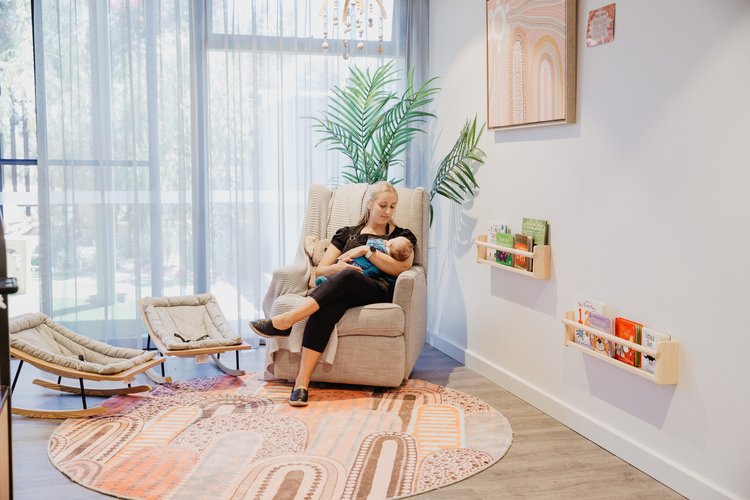This article is a follow on from one that I wrote on the development boom the Perth market is currently experiencing for new childcare centres – an article that focused in the main on the development / investor angle of the childcare industry.
In this article I reflect on the challenges and opportunities that are currently facing the other side of the development coin – tenants. Thanks to the very generous input from some of my closest tenants.
On a macro level tenant demand for new centres and new locations in Western Australia remains firm. Perhaps not as firm as it has been for the past 3 – 5 years but certainly for good sites in good locations there is still significant appetite. Behind the scenes however there are a number of challenges tenants in the sector are facing and are going to continue to face at least in the short term.
Construction costs remain a challenge in Western Australia and whilst it appears the worst of escalating cost increases is behind us, increases are still occurring which is making project feasibility on a number of sites more difficult. Whilst construction costs / development feasibility may not seem like a tenant issue, if the project for either a developer or an owner occupier becomes too expensive and hence unfeasible – the occupier misses out on a new business in a new location. Not only is this an issue for the occupant seeking to expand into a potential location but it can also have issues such as inhibiting growth plans, staffing (relocating, promoting etc) etc.
With construction costs increases appearing to be easing, we are also now seeing a plateauing in rents operators are prepared to pay. It would now be safe to say that rents generally sit within the band of $3,250 to $4,000 per licensed place and I’m not having to review that range as I review this article. From an occupant perspective this is providing more certainty particularly for tenants looking to expand, undertake due diligence, cash flow planning etc.
As a general rule most of the large corporates are no longer seeking to expand in WA, the exception being G8 Education and they are only interested if the site meets a number of key metrics. As the majors have stepped back this has created opportunity for others and whilst we are still witnessing reasonable interest from local ‘junior’ corporates we have begun to see over the past 12 – 18 months emerging interest in WA from east coast ‘junior’ corporates ie those with 3 – 20+ centres generally in Victoria / NSW. It will be an interesting one to sit back and watch unfold.
The biggest challenge undoubtedly facing the childcare industry is the availability of human resources ie staff. The childcare industry is not alone with numerous other industries crying out for additional labor and generally being unable to find it. The industry is one where advancements in technology, for foreseeable future at least, are unable to assist (to my knowledge ECRU don’t currently allow robots to count as a staff in ratios) so from an efficiency point of view there is very little operators can do. Its simple really, additional humans are required to look after small humans and as it currently stands Australia wide there are not enough humans wanting to care for smaller humans.
What this drills down to on an operator level is that some centres in some locations are having to apply an enrolment cap due to staff shortages. This situation isn’t good for operators, parents, building owners – anyone really.
Data from the National Skills Commission shows there were more than 7,000 vacancies across the sector in September 2022. Community Early Learning Australia estimate that number could rise to 10,000 by July 2023. This figure to coincide with the changes which will come into place for CCS funding for parents from 1 July 2023 (more on that below). If we extrapolate the estimated staff shortage across licensed places it equates to a potential 40,000 to 100,000 unfillable childcare places purely down to an inability to provide care in line with required ratios. That’s a startling figure if one considers the potential impact on families who want to use care to allow a parent or parents to return to work. In effect it means alternative solutions need to be found such as other family members, working from home (whilst potentially parenting at the same time) or simply not working and staying at home due to a lack of available and suitable care being available. Now I’m not nearly clever enough to work that through in lost economic revenue but it would be significant. Furthermore in a country which is basically experiencing ‘full employment’ (ABS Data from December 2022 stated WA’s unemployment rate at 3.6%) – the labour shortage is real and doesn’t appear to be likely to abate anytime soon. Australia as a whole at the current time simply doesn’t have enough people to fill all the available jobs in the economy across a number of sectors and generally childcare being a ‘vocation’ isn’t always at the top of potential careers.

So why are there so many reported job vacancies in the childcare industry Australia wide? Other than the full employment Australia is experiencing the childcare sector has had a staff shortage bubble brewing for a number of years and covid-19, the development boom and now increased funding for the sector (coming into effect from 1 July 2023) has only made the problem worse. Staff are also leaving the industry in droves with common themes across the industry including poor pay, working hours / split shifts and burnout. It also needs to be remembered that approximately 97% of the workforce is female which alone dilutes the potential employee pool significantly.
Rates of pay for childcare workers are widely accepted as far too low with the average salary in Australia between $55,000 and $65,000, according to job site Seek. Goodstart who are Australia’s largest childcare provider (and employer in the industry) were campaigning in November 2022 for a 10% pay rise across the board and to be funded by the Federal Government. The difficulty with across the board pay rises is that it will affect individual businesses differently and nearly all businesses if they were forced to pay their staff more would simply pass this cost onto parents (because unlike other industries they can). Many parents are already complaining about the high cost of childcare, so unless operators are prepared to accept a hit to their bottom line and run businesses for a lower return, which they won’t, the industry pay conundrum isn’t one which I see working itself out anytime soon.
In my view smaller operators have significantly more flex in this area, whereby they can negotiate above award pay conditions or other flexible conditions (ie extra annual leave, car allowance etc) with staff on an individual basis or actively seek to recruit certain needs areas and manipulate working conditions to suit a potential employee. The Bigger employers in the Sector ie Goodstart, G8, Affinity etc simply don’t have the ability to negotiate individual working conditions and can’t afford to pay significantly above the award, across the board.
Changes to the CCS subsidy come into effect for all parents from 1 July 2023 at an estimated cost to the Federal Government of $4.5bn over four years. The changes to the subsidy lifts the maximum CCS rate to 90% for families earning $80,000 or less and increases CCS rates for around 96% of families with a child in care and earning under $530,000. The new subsidized rates, it is estimated, will reduce out-of-pocket expenses for a typical family by 37%.
As I touched on above the Federal Government is seeking to make childcare cheaper for all families across the board by increasing the amount and availability of CCS to families and this is where the conundrum lies. If industry award rates are increased by 10%+ (and for the record I fully support paying our early years educators more money!) this cost will likely be passed onto parents by operators, effectively limiting the Federal Governments increases to CCS and their efforts to make childcare cheaper and more readily available for more parents. Part of the reason for increasing CCS is to attract more parents (generally women) back to the work force in the hope some of the job vacancies in the market will be absorbed. Time will tell, likely in the back half of this year how effective increases to CCS has been and whether more people have returned to work or whether childcare has just become cheaper and more accessible for more families. By then the picture should also be clearer as to whether the industry has been able to attract more talent and whether the expected increased demand has actually resulted from childcare becoming cheaper.
My crystal ball tells me operators will continue to drive demand for new centres in WA and they will back themselves to recruit key talent (generally poaching from other locations). I can see larger corporates struggling to fill vacant employment positions across the state which will see enrollment caps on certain locations due to the inability of these operators to sufficiently staff their centres. Whilst I firmly believe we need to pay our early years educators more $, from a whole of industry stand point I don’t think this is the be all and end all of staff attraction and retention. We shall see what unfolds.

